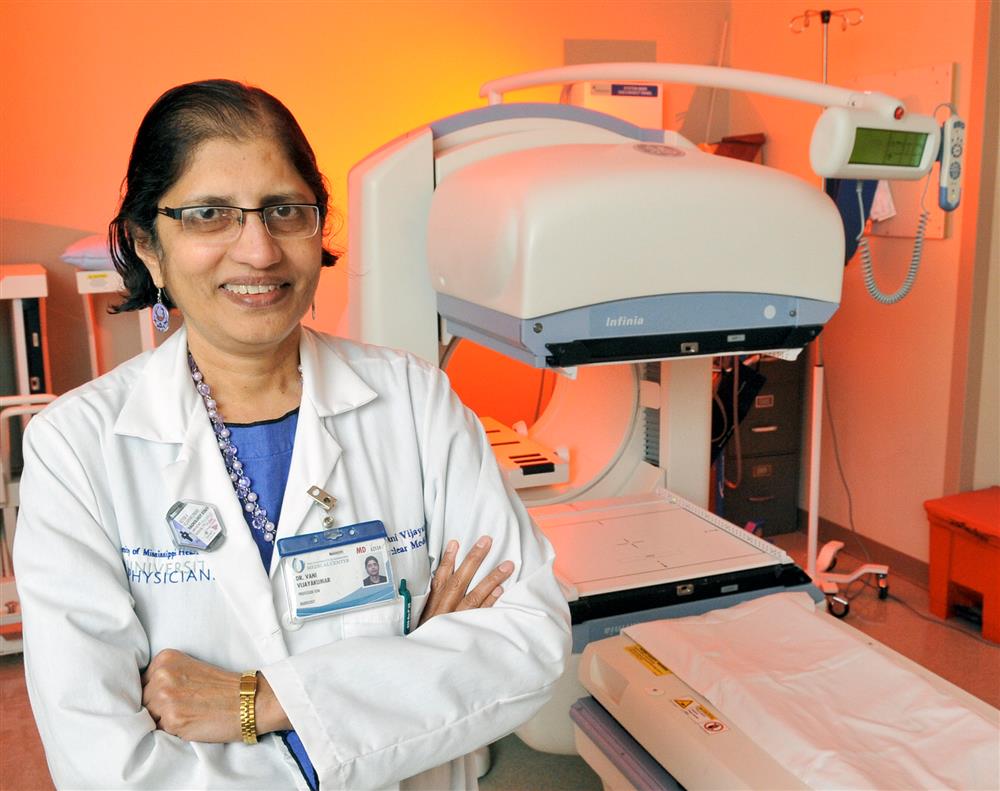UMMC offers breakthrough drug to better diagnose Parkinson's disease

University of Mississippi Medical Center now offers a procedure that helps physicians better diagnose Parkinson’s disease.
The Medical Center is one of two places in the state to offer DaTscan, a new imaging radiopharmaceutical drug recently approved by the FDA. Dr. Vani Vijayakumar, professor of radiology and chief of the Division of Nuclear Medicine, said DaTscan is a significant breakthrough for patients suffering from Parkinsonian symptoms because it helps physicians to make a correct diagnosis and to prescribe an appropriate course of treatment.
“A lot of patients have tremor but not all of them have Parkinson’s disease. DaTscan can help physicians know what to do,” she said.
Madison resident Gan Nelson's case illustrates the benefit of the procedure. She had been diagnosed with Parkinson’s disease in 2006, but her symptoms, more than five years later, only exhibited on her left side. The tremor and rigidity often associated with Parkinson’s had not shifted across her body.
“I was doubtful it was Parkinson’s disease because after a year, it’s usually bilateral,” said Dr. Alexander Auchus, UMMC professor and McCarty chair of neurology, who examined Nelson.
Vijayakumar said DaTscan helps a physician determine if certain symptoms are related to an essential tremor or Parkinsonian syndrome, such as Parkinson’s disease, progressive supranuclear palsy or multiple-system atrophy.
In Nelson’s case, the procedure answered Auchus’ question of proper diagnosis. A brain image confirmed that the levels of dopamine, a chemical that controls movement, were abnormal. Nelson had Parkinson’s disease, just an atypical presentation of the illness.
“It was very helpful in convincing me where to go when I doubted the diagnosis,” Auchus said. “That empowered me and the patient to change therapies.”
Nelson said the new drug therapy has helped manage her disease.
“I’ve gotten rid of the stiffness. The main thing for me is it got me on the right medications. I’m really not having problems with it,” she said.
Vijayakumar said before DaTscan, diagnosing Parkinson’s disease wasn’t so clear cut. The process involved physicians using their experience and best judgment based on symptoms.
DaTscan is injected into the bloodstream to help the doctor assess the level of a dopamine. Parkinsonian syndromes occur when the brain is not getting enough of the dopamine it needs to perform certain functions. This affects the ability of the brain to control movement and other muscle functions.
Brain SPECT imaging is performed three to six hours after intravenous injection of DaTscan, which takes about 30 minutes.
“It was very simple,” Nelson said. “It helped us rule out everything except the Parkinson’s disease.”
Sensitivity reactions (such as rash or itching) have been reported after DaTscan administration. In clinical trials, the most common side effects were headache, nausea, dry mouth or dizziness.


